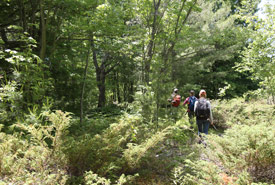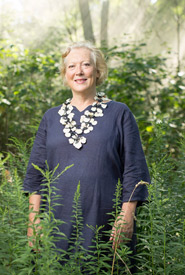Innovation through collaboration

Nebo, SK (Photo by Matthew Braun/NCC staff)
Corporate philanthropy plays an important role in supporting the arts, culture, education, health and environment in Canada. Five years ago, corporate philanthropy in Canada totalled approximately $3 billion. Since then, the corporate-giving landscape has changed. The focus is no longer just on how much is donated, but also on the environmental and social benefits achieved through it. Impact-based giving, known as strategic philanthropy, requires a new type of donor model that is more partnership-based, where both parties actively participate, bring different skills to the table and work together to achieve results.
Five years ago, TD Bank Group launched TD Forests to educate our employees and raise awareness of the need to steward our natural resources in the face of a growing population and mass urbanization. We were looking for a national partner with strong science-based credentials and regional presence. We chose the Nature Conservancy of Canada (NCC), and the past five years have been a journey of ongoing learning, creation of shared value and measurable environmental benefit.
TD’s first objective was to raise awareness of the impact of urbanization. We did this by using paper usage as an indicator of our collective impact. We then committed to protect important forest habitat equivalent to the amount of paper we use. After much deliberation on the best way to link forest biomass to paper, we arrived at a formula with NCC scientists. To date, TD Forests has helped to protect more than 40,000 acres (16,000 hectares) of forest, in seven of Canada’s eight forest regions.

Emma Young, ON (Photo by Mike Dembeck)
We then decided to measure the environmental benefits. For this, we engaged our TD Economics team and NCC scientists in measuring the natural capital value of the forest habitats we helped protect. Natural capital valuation seeks to put a dollar value on the environmental benefits provided by natural resources, and in doing so, leads to more informed planning and policy decisions.
Some of the benefits forests provide include carbon storage, flood control, air purification and temperature moderation. In the report The Natural Capital Value of Forest Habitat Conservation 2015, we calculated that just three of the properties TD Forests helped protect provide more than $86 million in environmental benefits per year.
Lastly, we decided to share our learnings by creating a cross-country speakers series, “Why Forests Matter.” The program engages Canadians by bringing together diverse perspectives and highly personal views on the value of forests – from Aboriginal groups to academics, artists, members of the forest products industry and many others.
Working with NCC shows what can be achieved through innovative collaborations, and provides a problem-solving model that can be applied to many of the environmental challenges that we face today.
This post originally appeared in the Globe and Mail and was produced with the support of Randall Anthony Communications Inc.


